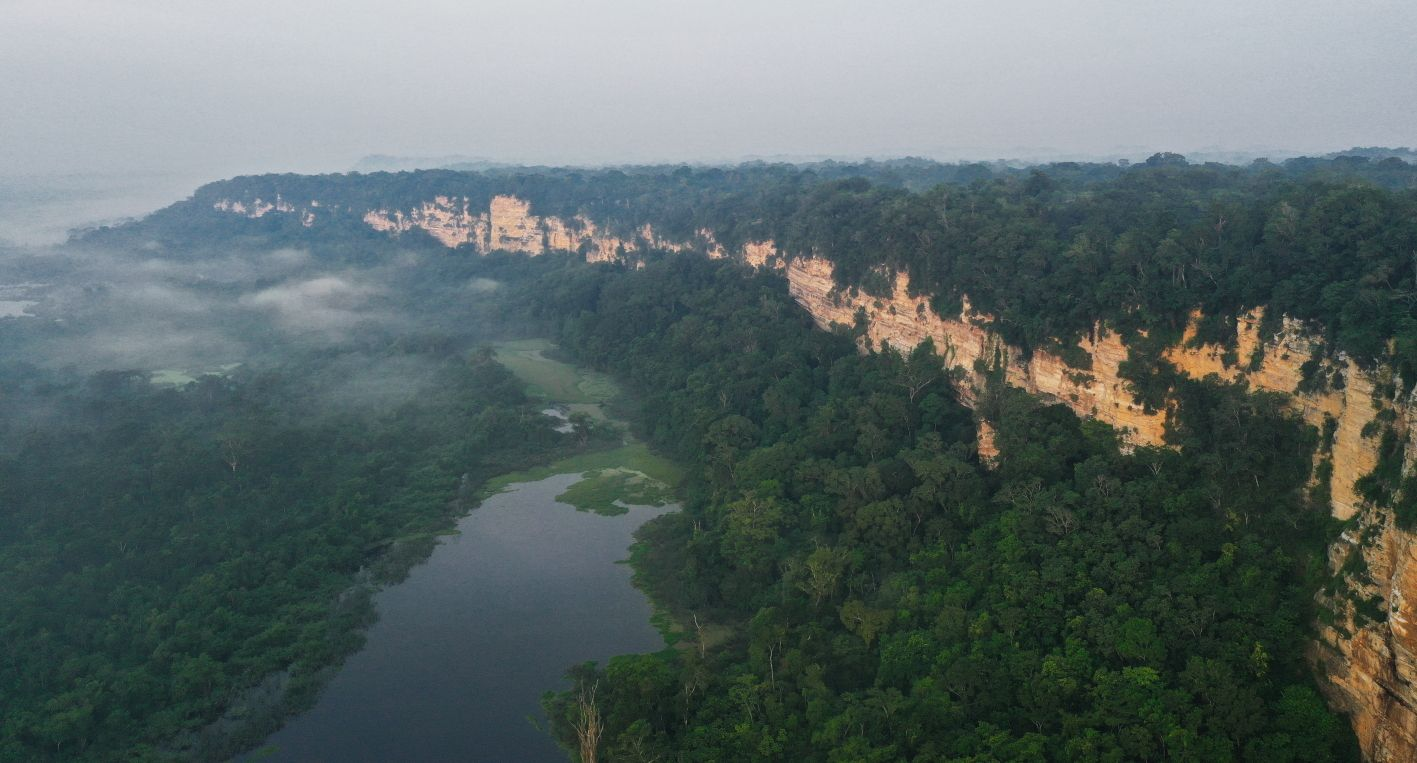Today, August 24th, is International Day of National Parks and we celebrate the importance of these protected areas that contribute to ensuring healthy ecosystems that constitute the habitat for important species of flora and fauna, and that support the livelihoods of local communities.
 Photo: Peñón de Buena Vista, Laguna del Tigre National Park, Maya Biosphere Reserve, Guatemala.
Photo: Peñón de Buena Vista, Laguna del Tigre National Park, Maya Biosphere Reserve, Guatemala.
In Guatemala, there are 22 National Parks, and the first of them, declared in 1955, corresponds to the legendary Tikal National Park. Subsequently, in 1990, the National Parks of Laguna del Tigre, Sierra del Lacandón, Yaxhá-Nakum-Naranjo, and Mirador Río Azul were created within the Maya Biosphere Reserve (MBR), located in the Petén department. Here, the Wildlife Conservation Society (WCS) has been conducting conservation actions for over two decades in collaboration with governmental entities and community-based organizations. The areas of focus for WCS's work in the National Parks, surrounding communities, and buffer zones include biological monitoring, community conservation, and environmental protection.
Biological monitoring is aimed at generating scientific information for management decision-making and measuring the impact of conservation actions on the landscape. WCS conducts research to measure populations and the health status of species such as the Scarlet Macaw (Ara macao cyanoptera), the jaguar (Panthera onca), and the white-lipped peccary (Tayassu pecari). This work is carried out by trained personnel dedicated to nest searching and monitoring, camera trap recording, and specialized technicians for laboratory management, species identification, and data analysis.
 Photo: Jaguar captured on a camera trap in the Maya Biosphere Reserve
Photo: Jaguar captured on a camera trap in the Maya Biosphere Reserve
Community Conservation is aimed at providing support to communities within and around the National Parks to achieve resilience against adverse conditions—whether of natural origin or caused by human pressure—that affect their socio-economic needs for survival. As a strategy to minimize this impact, WCS offers technical support and capacity-building to communities to enhance the use and management of natural resources, such as xate palms, training for beekeepers, forest rangers, and other activities aimed at achieving a socio-environmental balance. Additionally, efforts are directed towards strengthening local capacities to manage and protect the forests in which they reside and upon which they depend.

 Photo: Technical support sessions in the Maya Biosphere Reserve
Photo: Technical support sessions in the Maya Biosphere Reserve
For Erwin Maas, a member of the Organization for Management and Conservation (OMYC) in the community of Uaxactún, which is adjacent to Tikal National Park, the only way to maintain forest coverage is through organization. "I know that internationally, there are regions with a lot of forest, but if they don't organize, they won't feel that harmony, that love for nature," he says.
 Photo: Erwin Maas and Antonia Álvarez from OMYC-Uaxactún.
Photo: Erwin Maas and Antonia Álvarez from OMYC-Uaxactún.
Non-timber forest utilization such as the extraction of chicle (Manilkara zapota), ramón seeds, pepper, and xate palms allows communities like Uaxactún to manage and protect the jungle while also strengthening the local economy. Since 2007, they have held Forest Stewardship Council (FSC) certification, overseeing the management of the xate palm, an activity that sustains the community. "Where a xatero worked today, in 3 or 4 months, they come back to collect xate, and the plant continues to thrive, and so do we," emphasizes Juan Cruz, another member of OMYC. The support provided by WCS to OMYC has been of vital importance in contributing to the conservation of Tikal National Park.
 Photo: Juan Cruz packing xate leaves at the Uaxactún community enterprise.
Photo: Juan Cruz packing xate leaves at the Uaxactún community enterprise.
Another line of action is environmental protection, carried out through two main components: the first relates to control and surveillance through permanent physical presence in the territory, at Interinstitutional Operations Centers, with the participation of park rangers from the National Council of Protected Areas (CONAP), co-administrative partners, Guatemalan government security forces, and WCS. WCS's specific support in "El Escudo" sector of Laguna del Tigre National Park helps channel financial and in-kind resources to strengthen field operational activities.
The second component involves the prevention and control of forest fires, encompassing the identification of vulnerable areas and the design of risk reduction systems, including issuing alerts, establishing firebreaks, and implementing the SATIF (Early Warning System for Forest Fires). The information generated to guide decision-making is produced in collaboration with the National Council of Protected Areas (CONAP), which is the governing body of the Guatemalan Protected Areas System (SIGAP).
Celebrate National Parks Day by visiting them!
Learn more about the National Parks of Guatemala https://conap.gob.gt/guatemala-y-sus-parques-nacionales-en-el-sigap/here
by WCS Mesoamérica y el Caribe